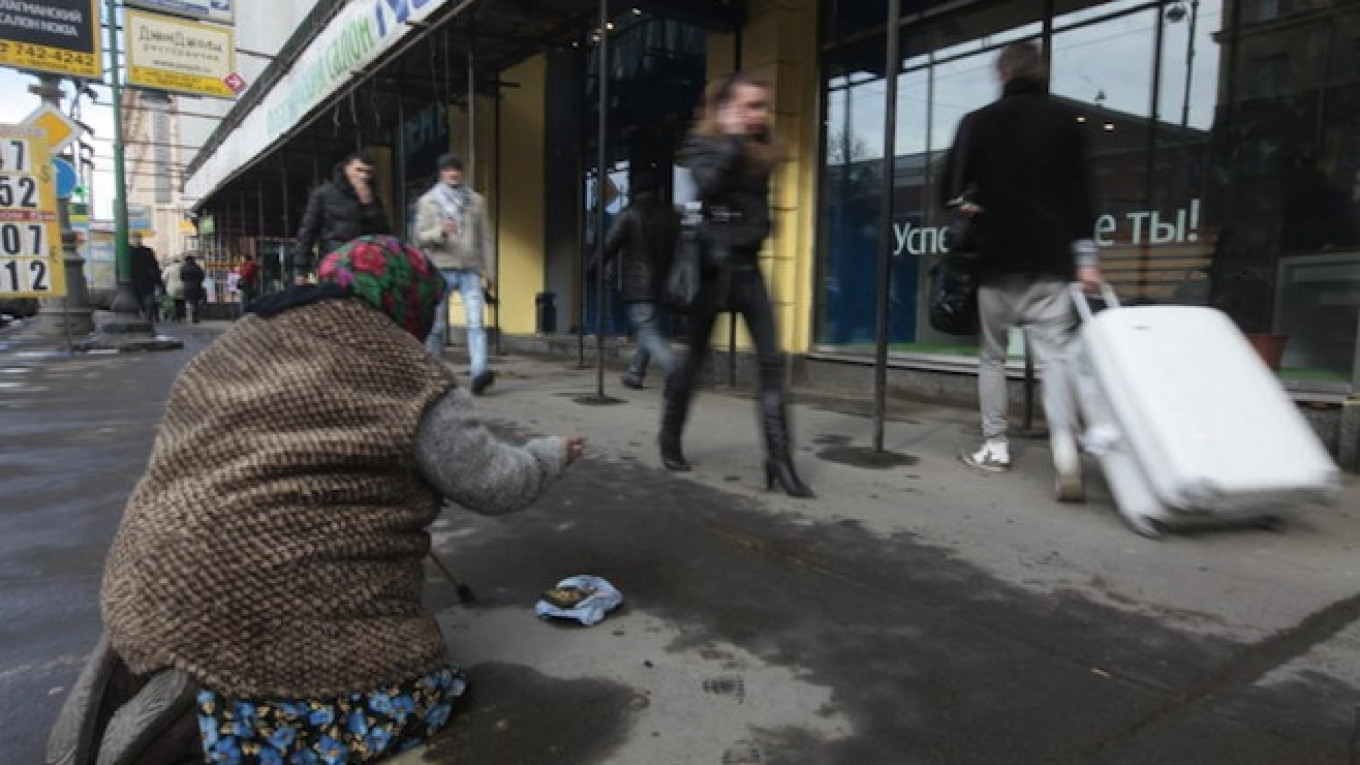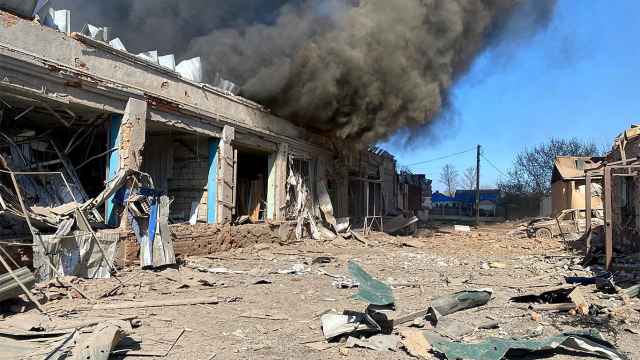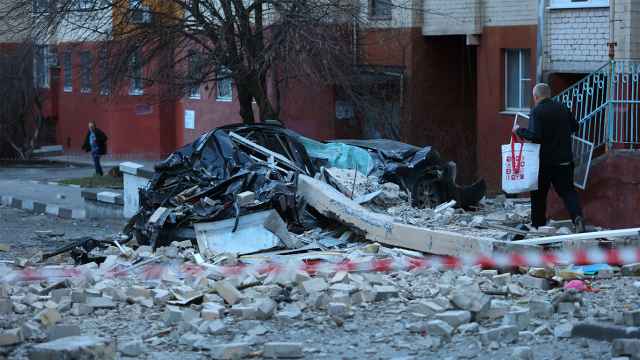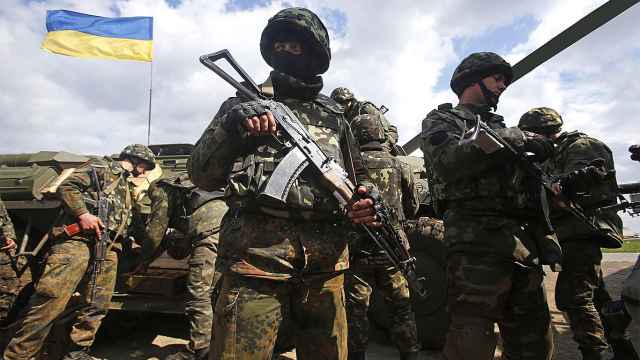
Natalya Zubarevich
The Russian economy is locked in an especially bad crisis. It differs significantly from the crises of 1998 and 2008-2009, when rapid downturns were followed by equally rapid recoveries. If anything, the current crisis more closely resembles that of the early 1990s, when Russia was transitioning from a planned to a market economy. Although salaries fell further then — by more than 50 percent — the same institutional problems caused both crises. The norms and rules now in place in the Russian economy are blocking its further development, just as they did back then.
Budgets are in the worst condition. The federal budget deficit for 2015 totaled 2 trillion rubles ($32.8 billion) or 2.5 percent of gross domestic product. The combined deficit for all regional and municipal budgets totaled 2.7 trillion rubles ($44.3 billion), or 3.5 percent of GDP — 11 percent more than in 2014.
Industrial output fell by 5 percent by May 2015. Household personal incomes dropped last year by 4.7 percent (and by 6.9 percent this February when compared to February 2015). Consumption slumped sharply, causing a 10 percent decline in retail sales. Construction was down by 13 percent in September 2015, and by 7 percent for the year overall. Investment continues to fall for the third consecutive year, and each year the rate of decline increases. Last year alone investment dropped by 8.4 percent. That means the crisis is continuing, and even if this or that sector has already "hit bottom," there is no guarantee that investment will not fall even further — because there are no drivers of growth in the Russian economy.
What are drivers of growth? They include improvements to the business environment, more predictable policies and the absence of geopolitical adventurism. Businesses do not invest when they are uncertain what will happen tomorrow, next year or five years from now.
This crisis has geography of its own. Worst hit are the industrial regions that produce automobiles and train wagons. In those sectors, production is off by as much as 30-50 percent. That is the result of a sharp drop in buying power. The Russian car industry modernized over the last decade, but people do not have enough money to buy foreign cars assembled in Russian plants. They can't even afford the basic Lada automobile manufactured by AvtoVAZ. A sharp drop in foreign demand for Russian train wagons has led to a steep decline in manufacturing by UralVagonZavod in Nizhny Tagil. Now that John Deere harvesters have become too expensive for Russian farmers, the only domestic industrial sector experiencing growth is agricultural machinery. But how long will that last?
Oil and gas regions are faring better, especially such relative newcomers as Sakhalin, eastern Siberia and the Yamal-Nenets autonomous district. Extraction continues and production is up in those regions thanks to investments made in past years. Agrarian regions in the south are also on the upswing, although growth is slow — at just 3 percent for agriculture and similar figures for food production. That is the result of import substitution caused by the devaluation of the ruble. However, import substitution is progressing slowly. For example, Russia was already producing 90 percent of its own poultry before the crisis, but now produces only 95 percent. It was meeting 70-80 percent of its pork needs, and now only close to 90 percent. However, the drop in demand and buying power will soon put a halt to such growth.
The same thing is happening in the pharmaceutical sector. Imported drugs have become more expensive and the government is purchasing fewer of them. Demand has therefore risen for cheaper and lower quality drugs produced in Russia.
What happened to the Russian economy in 2015

And last, regions that are home to military-industrial complex facilities are also seeing growth. These include the Bryansk, Tula, Vladimir and parts of the Yaroslavl regions, along with some of the republics on the Volga. The federal budget finances the defense industry and increased defense spending by 28 percent in 2015. But that holiday is already over: The federal budget is in the red and maintaining that level of defense spending is no longer an option. In fact, defense spending accounts for more than 20 percent of all federal spending — 33 percent if one includes national security expenses. I anticipate spending to decrease in those areas in 2016.
But the greatest impact this crisis has is on major cities, where people earn the most and consume the most, where demand is most modernized and where people make the greatest use of services. These residents buy more, they spend more on culture, recreation, travel, education and healthcare. After becoming accustomed to modern lifestyles, metropolitan residents are now forced to gradually abandon them. The services sector is the main form of employment in major cities, and as resources become increasingly scarce, employment falls fastest in this area.
With the crisis hitting businesses that provide services that improve life, major cities are witnessing the greatest overall drop in the quality of life and standard of living. This is a very serious problem. Not only incomes are dropping: so are people's work status, consumption patterns and standard of living. Every large city is also a huge labor market, and under crisis conditions, residents are forced to accept less desirable jobs that offer lower pay. Of course, people in the big cities feel frustrated and depressed, but they are adapting to their new lives.
The crisis will not cause an increase in unemployment in major cities, but it is reducing status and stifling ambitions.
Unemployment is rising slowly in the regions. Official statistics put it at only 5.7 percent in late 2015. That is negligible. The people of Spain and Italy would be happy with such an "unemployment problem."
Unemployment is not rising faster because, firstly, the effects of the crisis are felt slowly and factories are not generally closing down. Secondly, Russia has an unusual labor market. In place of layoffs, employees are given fewer work days per week, go on forced leave or simply stand idle. Business owners understand they can be punished for shutting down enterprises. They know it is better to keep their doors open.
Demographic factors also influence unemployment statistics. For example, more people are reaching retirement age and leaving the labor market than there are young people coming of age and entering it. Also, with the decline in construction, migrant workers that composed the greater part of those work crews are returning home and, as non-Russian citizens, were never included in official employment statistics.
As Russians adapt to the crisis, a sense of individualism and "every man for himself" has begun to dominate. Some find a second job, others settle for a less desirable position and still others go "underground" and stop paying taxes. In the provinces, residents are raising more chickens and pigs and planting more potatoes — the traditional way that Russians have fed themselves throughout the ages. One's own labor does not cost anything. That is the classic Russian "survival mode."
This year Russia is once again facing the prospect of double-digit inflation — and that means a new decline in real wages and real incomes. Russia becomes a poor and low-cost country full of great deals for foreign hard currency tourists.
It is the protractedness of the current crisis that makes it particularly challenging. Russia will remain at a nadir for some time to come. But the worst part is that people are getting used to it. And when people grow accustomed to a crisis, their primary coping strategy is to tighten their belts. They eat more potatoes and bread and less meat and mandarins, vacation at their dachas rather than at the sea and modify their consumption to fit their shrinking incomes. That is the main survival strategy. And it leads to degradation.
Natalya Zubarevich is a professor at Moscow State University and a regional program director at the Independent Institute for Social Policy.







